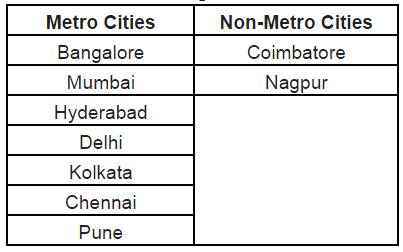The tiger has done India proud, again. India has the world’s largest tiger population and the rise in the middle class income levels has led to a rise in the number of tourists visiting national parks. [caption id=“attachment_1817091” align=“alignleft” width=“380”]
 Reuters[/caption] The number of tigers went up from 1,706 in 2011 to 2,226 in 2014, which resulted in a phenomenal increase of 230 percent in the number of holidays planned around tiger trails in 2015. Around 32 percent tiger trails have been planned by women and 68 percent by men. Domestic tourism Domestic tourism is largely regional. People from a particular region prefer to visit places that are local. The number of national parks in Karnataka have brought in more footfalls from the southern states who prefer pursuing tiger trails. The government-owned Jungle Lodges and Resorts has also significantly promoted tourism in the South, says Hair Nair, Founder and CEO, HolidayIQ, a travel portal. India has 70 percent of the world tiger population which increased by 30 percent in the past three years, according to the tiger census released earlier this year. The most visited tiger reserves in India are Bandipur National Park, Karnataka; Sunderbans National Park, West Bengal; Mudumalai National Park and Wildlife Sanctuary, Tamil Nadu; and Ranthambore National Park, Rajasthan. The hunger for tiger trails is being satiated by Bengaluru, Kolkata, Mumbai, Delhi, Chennai, Nagpur and Coimbatore. [caption id=“attachment_2551232” align=“alignnone” width=“403”]
Reuters[/caption] The number of tigers went up from 1,706 in 2011 to 2,226 in 2014, which resulted in a phenomenal increase of 230 percent in the number of holidays planned around tiger trails in 2015. Around 32 percent tiger trails have been planned by women and 68 percent by men. Domestic tourism Domestic tourism is largely regional. People from a particular region prefer to visit places that are local. The number of national parks in Karnataka have brought in more footfalls from the southern states who prefer pursuing tiger trails. The government-owned Jungle Lodges and Resorts has also significantly promoted tourism in the South, says Hair Nair, Founder and CEO, HolidayIQ, a travel portal. India has 70 percent of the world tiger population which increased by 30 percent in the past three years, according to the tiger census released earlier this year. The most visited tiger reserves in India are Bandipur National Park, Karnataka; Sunderbans National Park, West Bengal; Mudumalai National Park and Wildlife Sanctuary, Tamil Nadu; and Ranthambore National Park, Rajasthan. The hunger for tiger trails is being satiated by Bengaluru, Kolkata, Mumbai, Delhi, Chennai, Nagpur and Coimbatore. [caption id=“attachment_2551232” align=“alignnone” width=“403”]
 Courtesy: HolidayIQ[/caption] Age no bar Tiger trails have grown in popularity across all age groups. “We see couples as travelers accounting for close to 50 percent of most leisure holidays,” he said. Tiger trails are also popular with families. Of all tiger trails planned, couple travelers account for 36 percent, family travelers 32 percent and group holidayers 28 percent," said Nair. The rise in the numbers of tourists who want to go on tiger trails will reflect in a rise in revenues, which Nair said could be used for the welfare of the endangered species. The average spend on holidaying on tiger trails has also gone up. Travellers from India reported spending an average of INR 15,500 on their tiger trail holidays in 2014. Year 2015 spend shows a rise in that number to INR 17,686. Earlier, the plans to go on tiger trails would be done five weeks earlier. However, in 2015, the rise in the number of tourists who prefer going on tiger trails has reflected on a corresponding decreasing number of days, 30 only, to planning such holidays. [caption id=“attachment_2551234” align=“alignnone” width=“712”]
Courtesy: HolidayIQ[/caption] Age no bar Tiger trails have grown in popularity across all age groups. “We see couples as travelers accounting for close to 50 percent of most leisure holidays,” he said. Tiger trails are also popular with families. Of all tiger trails planned, couple travelers account for 36 percent, family travelers 32 percent and group holidayers 28 percent," said Nair. The rise in the numbers of tourists who want to go on tiger trails will reflect in a rise in revenues, which Nair said could be used for the welfare of the endangered species. The average spend on holidaying on tiger trails has also gone up. Travellers from India reported spending an average of INR 15,500 on their tiger trail holidays in 2014. Year 2015 spend shows a rise in that number to INR 17,686. Earlier, the plans to go on tiger trails would be done five weeks earlier. However, in 2015, the rise in the number of tourists who prefer going on tiger trails has reflected on a corresponding decreasing number of days, 30 only, to planning such holidays. [caption id=“attachment_2551234” align=“alignnone” width=“712”]
 Courtesy: HolidayIQ[/caption] The recent
initiative
by the National Tiger Conservation Authority (NTCA) to establish tiger safaris in the buffer zones of tiger reserves is yet another move which is expected to increase the number of travelers who wanted to see the majestic animal.
Courtesy: HolidayIQ[/caption] The recent
initiative
by the National Tiger Conservation Authority (NTCA) to establish tiger safaris in the buffer zones of tiger reserves is yet another move which is expected to increase the number of travelers who wanted to see the majestic animal.
Tiger trails boost tourism to 230 per cent in 2015
Sulekha Nair
• December 21, 2015, 11:32:42 IST
With the increase in the number of tourists interested in tiger trails, it is expected that the revenues it will generate can be used for the welfare of the endangered species, remarked Nair.
Advertisement
)
End of Article